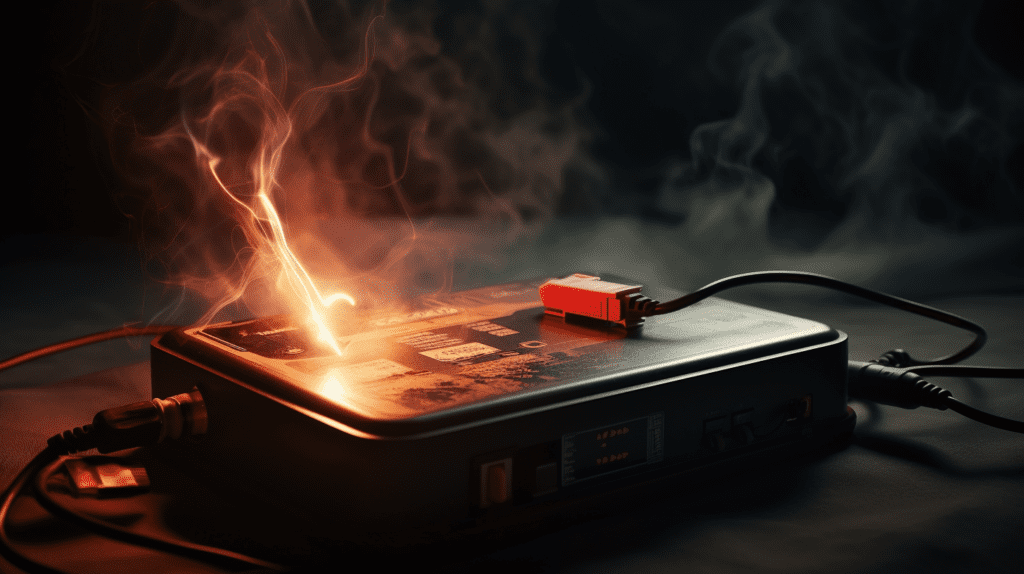The UK Maritime Agency has released new guidelines addressing the rising concerns of lithium-ion battery fires on yachts. These guidelines emphasize the importance of proper storage, crew training, and emergency procedures to mitigate risks associated with lithium-ion batteries, particularly those used in electric vehicles (EVs) stored onboard.
What Are the Risks Associated with Lithium-Ion Batteries?
Lithium-ion batteries pose several fire risks, particularly when damaged or improperly handled. Common causes include:
- Thermal Runaway: A condition where a battery overheats, leading to combustion.
- Manufacturing Defects: Poor quality control can result in internal short circuits.
- Physical Damage: Impacts or punctures can compromise battery integrity.
| Risk | Description |
|---|---|
| Thermal Runaway | Overheating leading to fire |
| Manufacturing Defects | Internal failures causing short circuits |
| Physical Damage | Compromised safety due to impacts |
How Can Ship Operators Mitigate Fire Risks?
Ship operators can implement several strategies to reduce fire risks associated with lithium-ion batteries:
- Regular Inspections: Conduct routine checks for signs of damage or wear.
- Proper Storage: Store batteries in well-ventilated areas away from heat sources.
- Use of Monitoring Systems: Install temperature and gas detection systems to catch issues early.
| Mitigation Strategy | Description |
|---|---|
| Regular Inspections | Identify potential hazards before they escalate |
| Proper Storage | Reduce risk by maintaining safe environments |
| Monitoring Systems | Early detection of overheating or gas emissions |
What Guidelines Should Be Followed for Storing EVs?
When storing electric vehicles (EVs) on yachts, follow these guidelines:
- Ventilation: Ensure that storage areas are well-ventilated to dissipate heat.
- Separation from Passengers: Avoid storing EVs in passenger areas to minimize risk.
- Emergency Access: Maintain clear access routes for emergency response teams.
| Storage Guideline | Importance |
|---|---|
| Ventilation | Helps prevent overheating |
| Separation from Passengers | Reduces risk to individuals onboard |
| Emergency Access | Ensures quick response during incidents |
Why Is Crew Training Essential for Safety?
Effective crew training is crucial for managing lithium-ion battery risks:
- Awareness of Hazards: Crew members need to understand the risks associated with lithium-ion batteries.
- Emergency Procedures: Training ensures that crew know how to respond quickly and effectively in case of a fire.
- Proper Handling Techniques: Educating crew on safe handling practices can prevent accidents.
| Training Focus | Description |
|---|---|
| Awareness of Hazards | Understanding potential risks |
| Emergency Procedures | Knowing how to react during incidents |
| Proper Handling Techniques | Preventing damage and ensuring safety |
What Best Practices Should Be Implemented for Fire Safety?
Implementing best practices can significantly enhance fire safety aboard vessels:
- Fire Suppression Systems: Install automatic fire suppression systems in areas where batteries are stored.
- Clear Signage: Use clear signage indicating battery storage areas and emergency procedures.
- Regular Drills: Conduct fire drills to ensure crew readiness and familiarity with emergency protocols.
| Best Practice | Description |
|---|---|
| Fire Suppression Systems | Immediate response capability during fires |
| Clear Signage | Enhances awareness and preparedness |
| Regular Drills | Keeps crew trained and ready for emergencies |
How Should Lithium-Ion Batteries Be Stored on Yachts?
Proper storage of lithium-ion batteries is crucial for safety:
- Cool, Dry Locations: Store batteries in cool, dry places away from direct sunlight.
- Secure Mounting: Ensure that batteries are securely mounted to prevent movement during transit.
- Avoid Overcharging: Use appropriate chargers and monitor charging cycles to prevent overheating.
| Storage Method | Importance |
|---|---|
| Cool, Dry Locations | Reduces risk of thermal runaway |
| Secure Mounting | Prevents physical damage |
| Avoid Overcharging | Protects battery integrity |
Redway Battery provides high-quality lithium batteries that can be used as replacements or complements to traditional battery technologies, ensuring reliable energy storage solutions.
Buy Wholesale Battery Tips
For businesses looking to purchase batteries suitable for various applications, partnering with a reliable manufacturer is essential.Redway Battery, with over 13 years of experience, is an excellent choice for battery wholesale buyers or OEM orders clients overseas. To place an OEM order from Redway:
- Identify your specific battery requirements.
- Contact Redway’s sales team with your specifications.
- Discuss pricing, minimum order quantities, and lead times.
- Finalize your order details and confirm production timelines.
This process ensures you receive top-notch products tailored to your needs while benefiting from competitive pricing.
Industrial News
Recent developments in maritime safety have highlighted the need for enhanced protocols regarding lithium-ion batteries aboard vessels. As electric vehicles become more prevalent, industry stakeholders are focusing on improving training programs and emergency response strategies related to battery fires. The emphasis is on creating safer environments through better practices and innovative technologies.
Redway Expert Views
“Understanding the risks associated with lithium-ion batteries is critical for ensuring safety aboard vessels,” states an expert at Redway Battery. “By implementing comprehensive training and safety measures, we can significantly reduce the likelihood of incidents.”
Frequently Asked Questions About Lithium-Ion Battery Fires on Yachts
- What are the main risks associated with lithium-ion batteries? Risks include thermal runaway, manufacturing defects, and physical damage.
- How can ship operators mitigate these risks? Through regular inspections, proper storage, and monitoring systems.
- Why is crew training important? It prepares crew members to handle emergencies effectively and safely manage battery risks.
- What best practices should be followed? Install fire suppression systems, maintain clear signage, and conduct regular drills.




